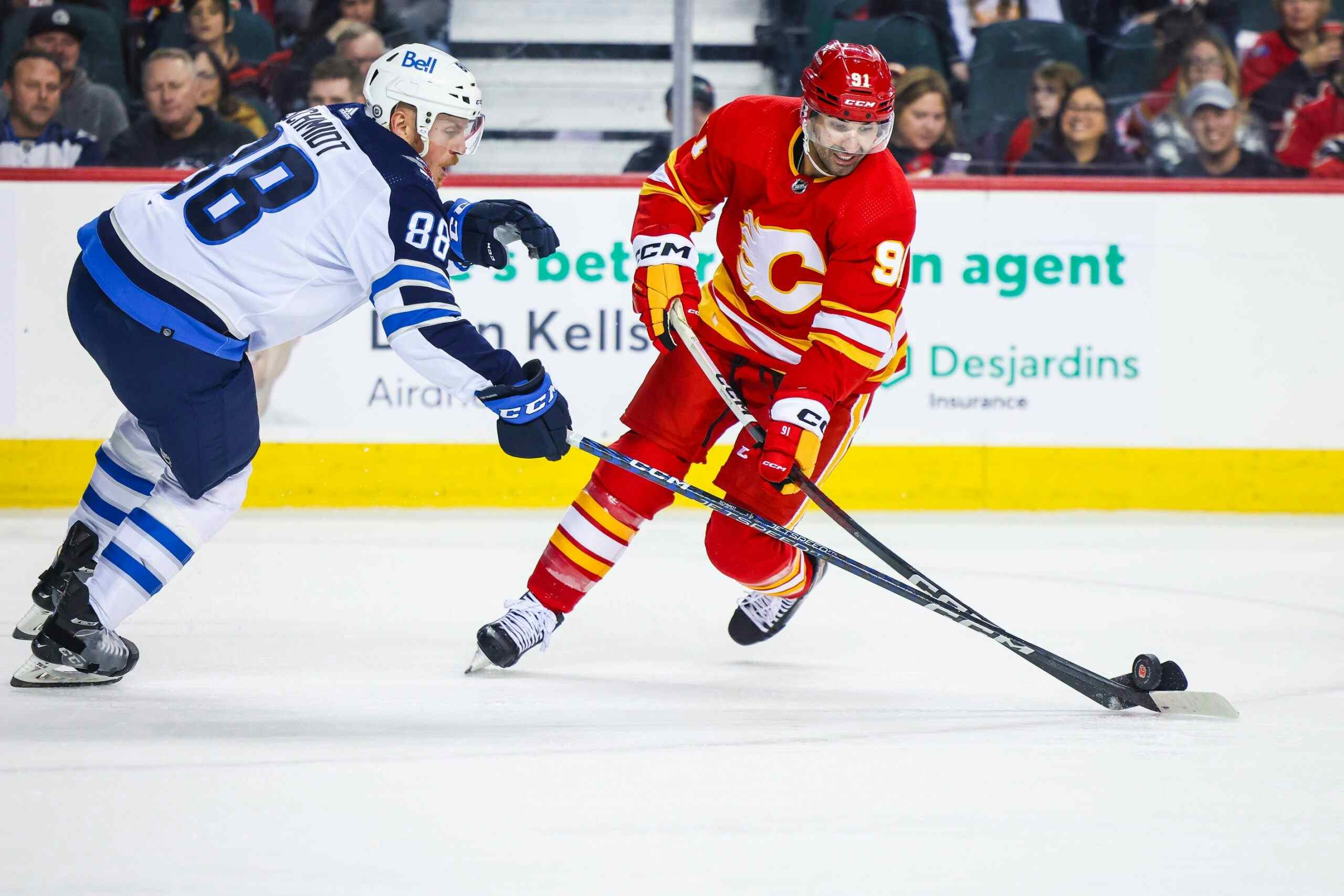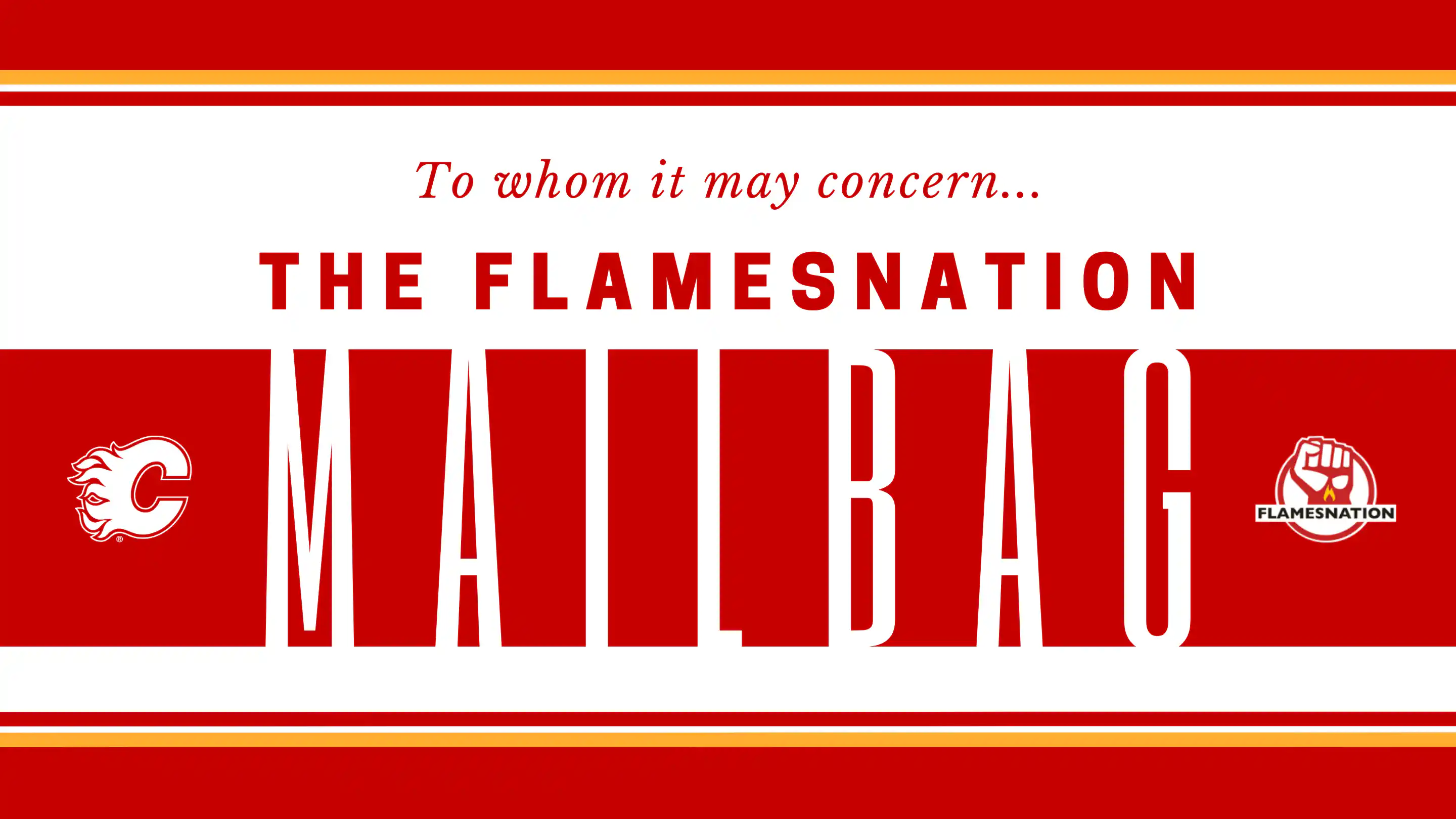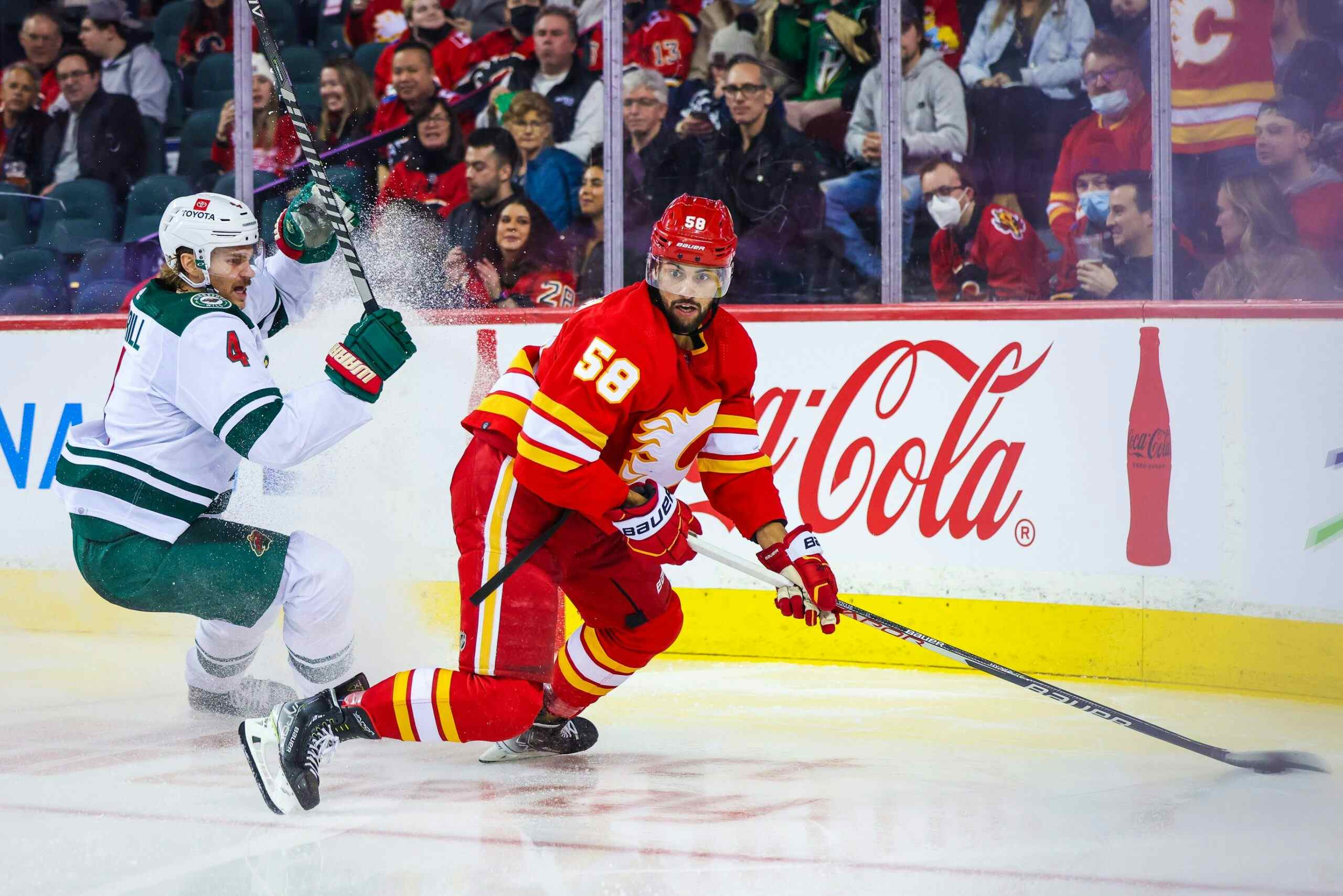Mid-Year Update on the Canucks
By RexLibris
8 years agoWe’re past Christmas and New Year’s and officially into the
second half of the season where we can begin to separate those teams that are
playoff bound from the rest of the league. There will likely remain a
collection of teams in the middle of the standings jostling for position and
making roster adjustments to try and secure a post-season berth.
second half of the season where we can begin to separate those teams that are
playoff bound from the rest of the league. There will likely remain a
collection of teams in the middle of the standings jostling for position and
making roster adjustments to try and secure a post-season berth.
We’ve also now accrued enough data to get a small picture on
the performances of the three Pacific Division teams that we examined back in
October: the Canucks, Oilers and Flames.
the performances of the three Pacific Division teams that we examined back in
October: the Canucks, Oilers and Flames.
So what can we learn from looking at the teams’ performances
to-date and how might it inform our expectations of them for the last half of
this season?
to-date and how might it inform our expectations of them for the last half of
this season?
We’ll begin with the Canucks, the first team we looked at in the fall, picking up their point totals, shooting percentages, point-per-game paces and also looking at team possession numbers, save percentage, goal differentials, and the impact of man-games lost.
That seems like a lot, but I promise we’ll do it graphically
and quickly. This isn’t psychanalysis or running CERN data outputs, there’s no
need to look too deeply into the numbers but rather just see what direction
they’re heading and if it explains anything about the team’s relative successes
and failures.
and quickly. This isn’t psychanalysis or running CERN data outputs, there’s no
need to look too deeply into the numbers but rather just see what direction
they’re heading and if it explains anything about the team’s relative successes
and failures.
The Canucks’ record as of January 7th was 16-16-9
for 41 pts and they sat 3rd in the Pacific and 6th in the Western Conference.
for 41 pts and they sat 3rd in the Pacific and 6th in the Western Conference.
Player Performances
Below is the table of the player performances thus far with
their paces in several categories.
their paces in several categories.

(All point totals courtesy of NHL.com)
I had suggested that the Canucks would be led by the Sedins
with perhaps Vrbata playing their wing once again, followed by a large
collection of questionable support players.
with perhaps Vrbata playing their wing once again, followed by a large
collection of questionable support players.
Jannik Hansen has taken the place of Vrbata here and his
points are indicative of that.
points are indicative of that.
The most noticeable disappointments by way of production are
Burrows, Higgins and the younger support group in Vey, Gaunce, and Virtanen.
The latter three are all very early in their careers and we can easily forgive
the struggles that accompany learning on the job. They are being given
opportunities to develop both within and away from the NHL and that is the best
thing for them. For the veterans, however, the year-to-date has been
disappointing.
Burrows, Higgins and the younger support group in Vey, Gaunce, and Virtanen.
The latter three are all very early in their careers and we can easily forgive
the struggles that accompany learning on the job. They are being given
opportunities to develop both within and away from the NHL and that is the best
thing for them. For the veterans, however, the year-to-date has been
disappointing.
The other half of the equation is the defense, which was
going to have to rely heavily on the Edler/Tanev pairing if the team was going
to have a chance, but the offensive production has been underwhelming thus far.
Serious injury to Dan Hamhuis hasn’t helped the situation, but the progress of
Ben Hutton has helped mitigate some of that loss.
going to have to rely heavily on the Edler/Tanev pairing if the team was going
to have a chance, but the offensive production has been underwhelming thus far.
Serious injury to Dan Hamhuis hasn’t helped the situation, but the progress of
Ben Hutton has helped mitigate some of that loss.
Stat-sy Stuff

(Data courtesy of War on Ice)
That trendline is very worrying. Since the Winnipeg/Chicago
series the Canucks have spent a considerable amount of time underwater.
Typically a team will have a lot of variance from game to game, but overall a
reasonable trend will emerge to establish a level of possession play. What
we’re seeing here is the Canucks are actually losing the handle and the results
are spending more time at the bottom than the top.
series the Canucks have spent a considerable amount of time underwater.
Typically a team will have a lot of variance from game to game, but overall a
reasonable trend will emerge to establish a level of possession play. What
we’re seeing here is the Canucks are actually losing the handle and the results
are spending more time at the bottom than the top.
Not good.
Keep an eye on those trendlines in this article and the
others that will follow. That’s the true story that is being written this
season, outside of the highlight reels and player interviews, it is the
direction of the teams over the course of the season.
others that will follow. That’s the true story that is being written this
season, outside of the highlight reels and player interviews, it is the
direction of the teams over the course of the season.
The Canucks’ PP sits 26th overall at 16.7% and the PK is 23rd
at 78.8%. The team is in the bottom third of the league in special teams, the offense consists of the Sedins as the only >50 point scorers and the team possession game is cratering.
at 78.8%. The team is in the bottom third of the league in special teams, the offense consists of the Sedins as the only >50 point scorers and the team possession game is cratering.
The Good, the Bad and the Goalering


(Data courtesy of NHL.com and affiliated team sites)
Above are graphs that show the in-season progression of the
sv% and goal differentials for the Canucks.
sv% and goal differentials for the Canucks.
You can see that early in the season the Canucks benefited from some strong play
by Miller which was supported by the forwards greatly outscoring the opposition
– basically textbook “How to Win At Hockey”.
by Miller which was supported by the forwards greatly outscoring the opposition
– basically textbook “How to Win At Hockey”.
Lately though those advantages
have been slipping and the results have reflected that. The early performances
by Miller were outstanding, by definition. They were exceptional when taken in
the context of his generally established level of ability and when one factors
in that he is past the point in one’s career where we typically see any
sustained improvement, it means that he was bound to come back down to earth,
even if only a little.
have been slipping and the results have reflected that. The early performances
by Miller were outstanding, by definition. They were exceptional when taken in
the context of his generally established level of ability and when one factors
in that he is past the point in one’s career where we typically see any
sustained improvement, it means that he was bound to come back down to earth,
even if only a little.
Could the Canucks weather that, though? Well, the goal differential
began to turn south and the saves stopped coming the way they had. In other
words, the wheels began to fall off. The Canucks have 9 of their 41 pts from
overtime losses and have been involved in 25 one-goal games, more than half
their entire record at the time of this writing. If goaltending begins to trend downward those
narrow-margin games will cease to be cashed in for victories and the OT point
will disappear.
began to turn south and the saves stopped coming the way they had. In other
words, the wheels began to fall off. The Canucks have 9 of their 41 pts from
overtime losses and have been involved in 25 one-goal games, more than half
their entire record at the time of this writing. If goaltending begins to trend downward those
narrow-margin games will cease to be cashed in for victories and the OT point
will disappear.
To put it succinctly, I am not bullish on their prospects
for the rest of the year.
for the rest of the year.


(Data courtesy of NHL.com and affiliated team sites)
In the pre-season look I had mused that Markstrom’s record
may not leave the coach with an option but to run Miller heavily during the
season and this appears to be somewhat true. Miller’s recent injury means that
Desjardins had to go with Markstrom. However, the backup has, outside of one
poor game against Los Angeles, provided fair to strong play.
may not leave the coach with an option but to run Miller heavily during the
season and this appears to be somewhat true. Miller’s recent injury means that
Desjardins had to go with Markstrom. However, the backup has, outside of one
poor game against Los Angeles, provided fair to strong play.
Thus far, the goal differential and sv% are both headed in
the wrong direction.
the wrong direction.
Miller is obviously getting the lion’s share of work and his
performance early in the season certainly justifies it. Whether this balances
out and to what effect as the season progresses, though, may prove to be an
interesting storyline for the Canucks as they near the trade deadline and
Benning has to make some roster decisions. If goaltending begins to falter
right as the playoff race heats up will he recognize it? Will he make bets on
the near or long-term?
performance early in the season certainly justifies it. Whether this balances
out and to what effect as the season progresses, though, may prove to be an
interesting storyline for the Canucks as they near the trade deadline and
Benning has to make some roster decisions. If goaltending begins to falter
right as the playoff race heats up will he recognize it? Will he make bets on
the near or long-term?
The possession numbers tell a story that both mirrors and
also accentuates the graphs above it. The Fenwick For percentages are in a
tailspin. Fenwick numbers are one of the better
predictors for long-term success available to us right now and based on that
metric it would be advisable to remain bearish on the Canucks’ chances this
season.
also accentuates the graphs above it. The Fenwick For percentages are in a
tailspin. Fenwick numbers are one of the better
predictors for long-term success available to us right now and based on that
metric it would be advisable to remain bearish on the Canucks’ chances this
season.
The back nine of the 2015-2016 season will have the Canucks
trying to build off a mediocre record thus far with many of their arrows
pointing in the wrong direction. Fortunes can change, players get hot and
injuries occur so we can’t write the story of their season yet, but based on the first 41 games I’d say the clouds are gathering and there are still some redshirts to be killed off.
trying to build off a mediocre record thus far with many of their arrows
pointing in the wrong direction. Fortunes can change, players get hot and
injuries occur so we can’t write the story of their season yet, but based on the first 41 games I’d say the clouds are gathering and there are still some redshirts to be killed off.
Injuries A Factor?

(Data courtesy of Man Games Lost – Excellent site, highly recommend it, has data on a variety of professional sports leagues, not just the NHL)
Using Man Games Lost, a fantastic site that tracks
man-games-lost per team and rates their relative impact to the team based on
possession metrics (CorsiRel), the Canucks have managed to weather some notable
injuries so far this season while making some progress in the
standings, albeit heavily in the overtime extra point format. To-date the principal
players lost to injury for the Canucks have been Sutter (26), Sbisa (15) and
Hamhuis (12). Sutter and Hamhuis are
arguably the most significant by way of roster impact and should be taken into
account when evaluating the Canucks’ performance thus far.
man-games-lost per team and rates their relative impact to the team based on
possession metrics (CorsiRel), the Canucks have managed to weather some notable
injuries so far this season while making some progress in the
standings, albeit heavily in the overtime extra point format. To-date the principal
players lost to injury for the Canucks have been Sutter (26), Sbisa (15) and
Hamhuis (12). Sutter and Hamhuis are
arguably the most significant by way of roster impact and should be taken into
account when evaluating the Canucks’ performance thus far.
Essentially what you see here is red = out of playoffs, where a team sits up/down is where they are in the standings, where they sit left/right is the number of man-games lost in total, and the size of the bubble indicates the importance of the player lost.
The Canucks have lost relatively important players for reasonable amounts of time but nothing crippling and are tucked in with a lot of teams currently out of the playoffs.
The big thing to take from this graph is that the majority of the best teams have small-to-average sized bubbles showing that they have either avoided injury or have suitable depth to weather it when it arrives. It is not a coincidence that teams with larger red bubbles further to the right are also further down the standings, but rather teams like Winnipeg and San Jose that are the outliers here.
Whither Shall This Canucks Team Go?

(Courtesy of MicahBlakeMcCurdy@Ineffectivemath, follow him on twitter, you’ll be better for it)
I’d ballparked that the Canucks would end the season around
5th in the Pacific division and somewhere in the range of 10th
in the Western conference, 23rd overall in the league. This was
based on player projections and using that to determine a goal differential
that we could slot into last year’s standings and then adjust according to the
rest of the league. Micah Blake McCurdy at Ineffective Math uses a point
projection system that is based on current play to extrapolate the most likely
outcome in the standings. His projections for Jan 11th suggested the
Canucks will finish with 83 points, south of my estimates and trending towards
4th worst in the league, ahead of Buffalo, Columbus and Edmonton,
respectively.
5th in the Pacific division and somewhere in the range of 10th
in the Western conference, 23rd overall in the league. This was
based on player projections and using that to determine a goal differential
that we could slot into last year’s standings and then adjust according to the
rest of the league. Micah Blake McCurdy at Ineffective Math uses a point
projection system that is based on current play to extrapolate the most likely
outcome in the standings. His projections for Jan 11th suggested the
Canucks will finish with 83 points, south of my estimates and trending towards
4th worst in the league, ahead of Buffalo, Columbus and Edmonton,
respectively.
The story of this year’s Canucks seems likely to be a
mixture of young rookies entering the league and another lost season of the
Sedins. With two more years remaining on their current contracts the Canucks
are certainly capable of a rebound season in 2016-2017 and it must be mentioned
that we are still only projecting our current season. There remains half a
season of play ahead of us, but for the Canucks to salvage this year they will
need to reverse nearly every single trendline listed above if they hope to have
a chance. It is difficult to imagine this happening any other way but on the backs
of the Sedins and perhaps therein lies the ultimate question surrounding this
team: to what extent, and for how much longer, can this roster be supported by
these two dynamic talents?
mixture of young rookies entering the league and another lost season of the
Sedins. With two more years remaining on their current contracts the Canucks
are certainly capable of a rebound season in 2016-2017 and it must be mentioned
that we are still only projecting our current season. There remains half a
season of play ahead of us, but for the Canucks to salvage this year they will
need to reverse nearly every single trendline listed above if they hope to have
a chance. It is difficult to imagine this happening any other way but on the backs
of the Sedins and perhaps therein lies the ultimate question surrounding this
team: to what extent, and for how much longer, can this roster be supported by
these two dynamic talents?
The Choice of Song?
In the first article I’d chosen Tom Petty’s Free Fallin’. it seemed appropriate for reasons I explained at the time. Runnin’ Down a Dream seems equally appropriate. Because of the extreme weakness of the Pacific Division this year the Canucks find themselves simultaneously poised for a playoff chase and a good chance at drafting in the top three.
“I felt so good like anything was possible
I hit cruise control and rubbed my eyes
The last three days the rain was un-stoppable
It was always cold, no sunshine“
I hit cruise control and rubbed my eyes
The last three days the rain was un-stoppable
It was always cold, no sunshine“
Recent articles from RexLibris





